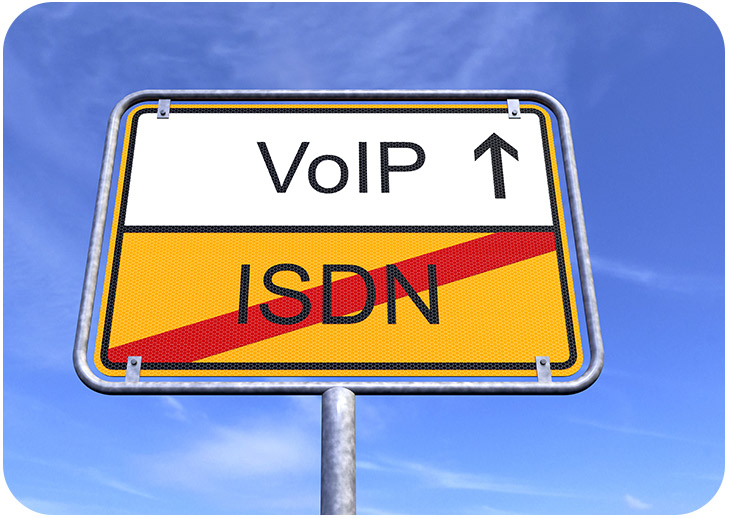Internet
Mobile
Devices
GO Energi
GO Insure
Moving to Malta
ISDN Switch Off: All your questions, answered.
13 May 2021

With solutions like SIP and vPBX providing easy, seamless connectivity, it’s time to say goodbye to legacy ISDN. Here’s what you need to know about the switch.
Traditional ISDN telephony has kept people and businesses connected for decades. Now, its era has come to an end. By 2023, we’re aiming to have switched off our entire Integrated Services Digital Network (ISDN). And that’s fantastic news for you.
At GO Business, we’re focused on providing future-proof, innovative connectivity that empowers your teams and drives collaboration and productivity – and ISDN no longer supports those goals. The digital-first, VoIP alternatives we offer can bring you big benefits, including seamless connectivity and new cost-efficiencies.
And while we’ll be switching out ISDN in phases, you’ll need to start preparing now. So we’ve put together a helpful guide for your migration. It answers any questions you may have – including why we’re transitioning away from ISDN, what alternatives are available, and how you can start your switch today.
Why is ISDN being phased out?
Since ISDN’s first use in the 1980s, the way we communicate and connect has evolved dramatically. Where the traditional telephony service was once hugely innovative, in that it enabled data and voice to be transmitted simultaneously, it’s now run its course.
Today, Voice over Internet Protocol (VoIP) technologies allow easy, instant delivery of all communications over the internet – whether voice, text, or image – while legacy technologies like ISDN offer none of these benefits, and are increasingly unsupported by vendors. In many cases, ISDN just can’t match up in terms of quality, configurability, or price.
ISDN technology comes with higher infrastructure and maintenance costs (costs that software-based connectivity services like VoIP don’t have), requires an external power supply, and can’t guarantee undisrupted connectivity. If your ISDN fails, your call will too.
These are just some of the reasons why we’ve seen an industry-wide move to phase it out in recent years. Telecommunications providers around the world are converging communications over the internet and switching off legacy ISDN technology, including BT, Australian firm Telstra, and New Zealand’s Spark.
What technologies can I use instead – and how are they better?
The good news is that there are a few alternatives to ISDN, and each offer a wealth of new benefits that can supercharge your teams’ connectivity, collaboration and productivity.
We suggest migrating to our virtual PBX (also known as unified communications), or SIP Trunk solution:
Virtual phone lines that run over the internet, Session Initiation Protocol (SIP) Trunking allows you to make calls using any data connection – and connect through a variety of channels, from voice to video.
As it’s internet-based, SIP isn’t reliant on one particular cable. So if you have a fault on your line, or your network goes down, you can still make a call using another internet service such as 4G.
Providing multi-channel communication opportunities, our SIP Trunk solutions offer more flexibility and cost-efficiencies than traditional, voice-only ISDN services. We provide as many channels as you need, a Fibre to the Premises access network, and free internal calls. And there’s no complicated infrastructure set up or maintenance costs.
Our virtual PBX provides a flexible, cloud-based alternative to traditional fixed line telephony. Incorporating messaging, voice and telephony, vPBX only requires a stable internet connection to keep your people connected – so whether they’re based in the office, offsite, or working remotely, communication is easy.
There’s no need for physical PBX infrastructure, so you can reduce upfront costs and eliminate your maintenance costs. You’ll also benefit from extensive collaboration tools, including file sharing and instant messaging. And with a ‘per seat’ subscription, you can scale as you grow without significant upfront investment.
Both of these solutions are great options for migration – it all depends on your individual needs. If you’re not sure which to choose, our team are happy to help.
How do I start the migration process, and what will it look like?
At GO Business, we want to make the migration away from ISDN as simple and painless as possible. To get started, you’ll just need to fill out this form.
An account executive will then get in touch with you to talk through the migration process and the alternative solutions available, answer any questions you may have, and get more details about your business.
Once you’re happy with your choice, our tech team will handle the migration and set you up with your new solution.
Where can I find out more?
Our ISDN switch off target is 2023, but it’s best to start thinking about migration right now. The quicker you make the switch to vPBX or SIP, the sooner you’ll benefit from the seamless, easy connectivity our virtual telephony services provide – and the less disruption you’ll face as we phase ISDN out.
You can find more about SIP Trunk and vPBX on our dedicated solution pages. Or, if you’re ready to make a switch today, just fill out this form to get started.